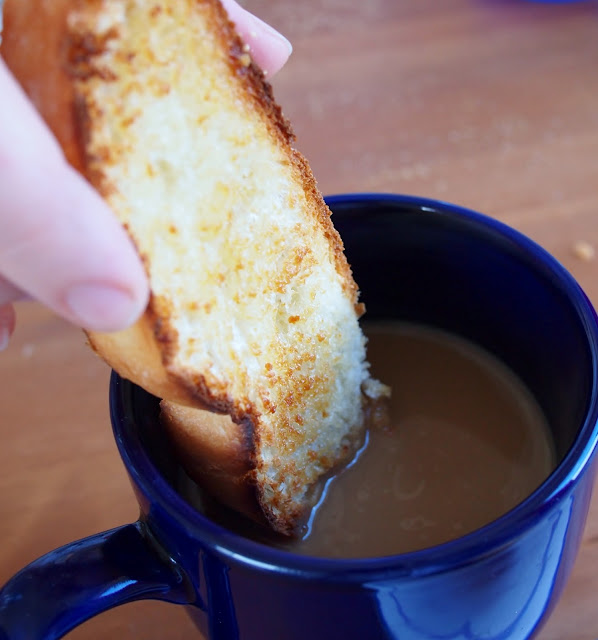After last week's exotic Gunfo, I thought we'd stick a little closer to home with the simple Cuban breakfast: Tostada and Cafe con leche. Or, toasted buttered bread and coffee with milk.
Now, from all this breakfast research I know that a large portion of the world regularly eats toast first thing in the morning so it would seem silly to feature such an ordinary food. But so many sources talked about the awesome wonder of Cuban Tostada and actually argued about the best bakery to go for Cuban bread that I figured it was worth investigating.
Cuban bread is fairly simple and is traditionally made in long white loafs similar to Italian or French bread. It has a secret ingredient however that sets it apart - that old chestnut from our grandmother's kitchen, LARD.
When I set about making Cuban bread I have to admit that I didn't even know where in the grocery story to go to find lard. After searching the baking and dairy aisle I finally found it hiding among the vegetable oils and pickles and was astonished by it's low price. (For those foodies out there, I realize that quality lard is best obtained at the butchers.)
Once out of the oven the bread, like all fresh baked bread, smelled great. In fact it was so inviting that we cheated and skipped the toasting altogether, just smothering the hot bread with butter and stuffing it in our mouths. (It should've technically been toasted like a panini and dipped in our coffee.)
Mmmmmm, it might've been my imagination but I think that maybe Cuban bread did taste creamier and smoother than regular white bread. Other than that it tasted like.... bread with butter. But sometimes the simplest things are the best.
The Verdict:
For Ease of Preparation:
I give this a three because as far as breads go it was fairly simple. It would be even easier if you lived in Miami or Cuba and could just pick this up at your local Bodega.
For Degree of Separation:

Bread with butter, 'nuf said.
For Guestability:

Nothing is more warm, inviting and hospitable than fresh-baked bread.
For Sustainability:

For Overall Appeal:
Though rather ordinary, Tostada was a welcome break or "palate-cleanser" from five crazy months of exotic breakfasts.
Join us next time as we tackle one of the most complex breakfasts yet - traditional Japanese 朝食.


















